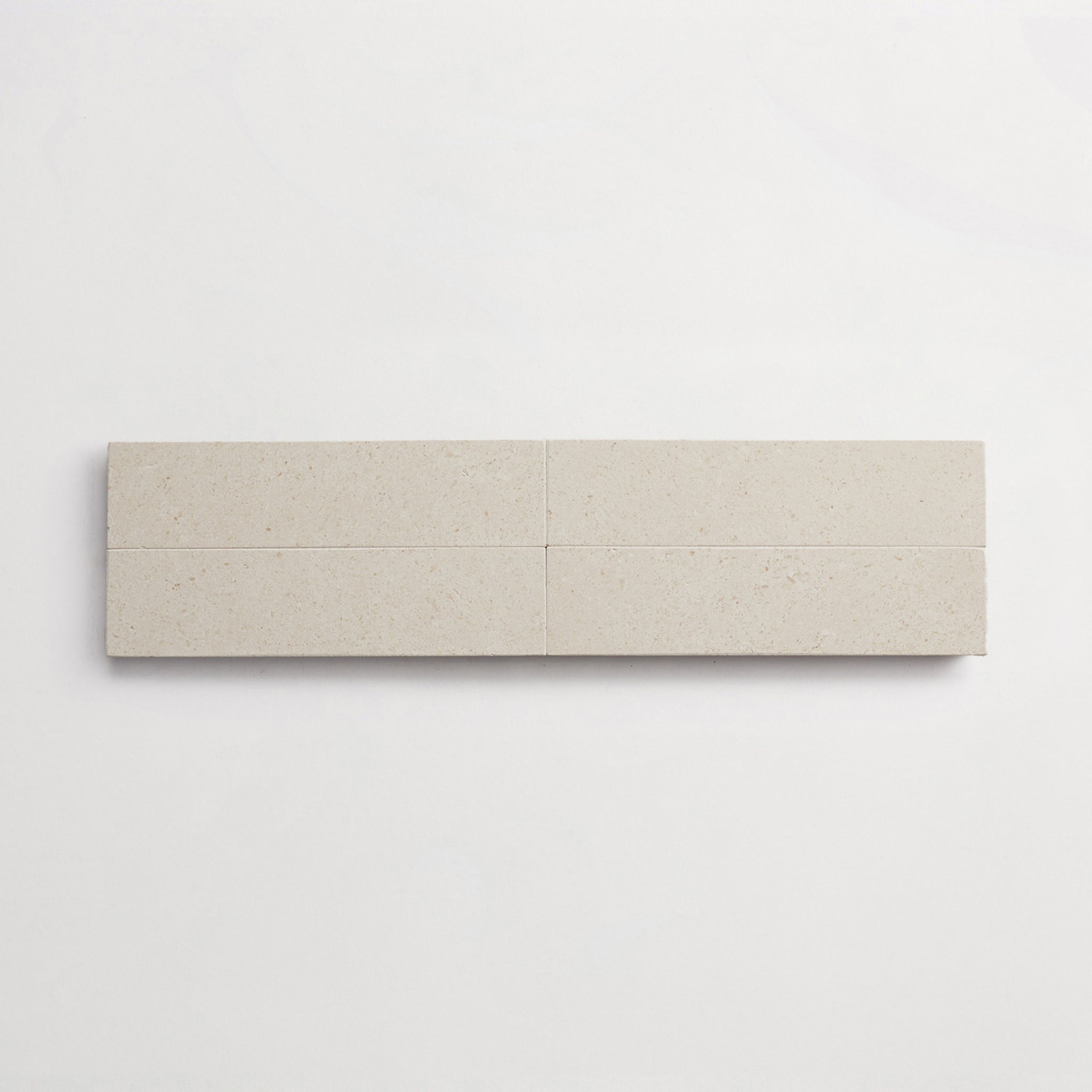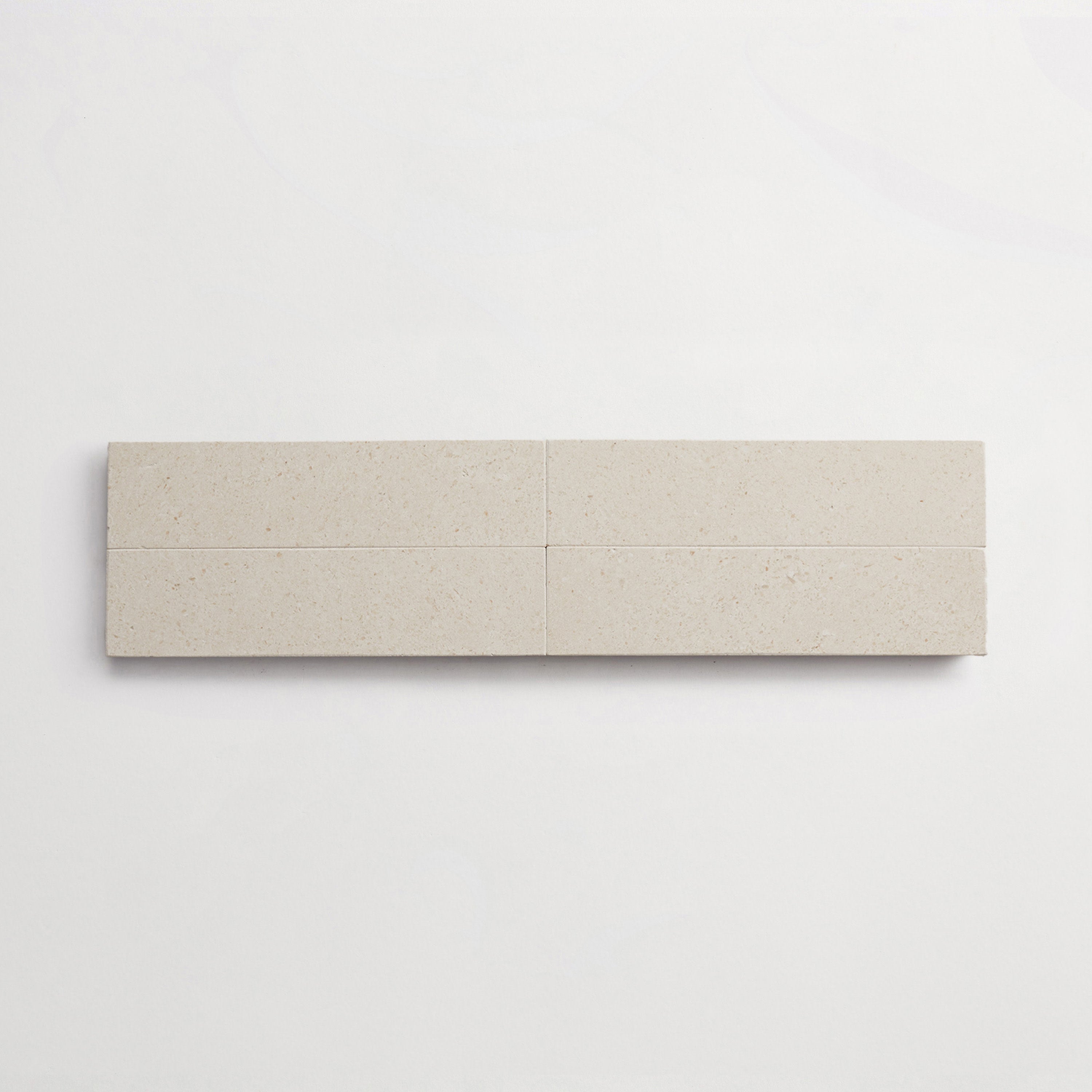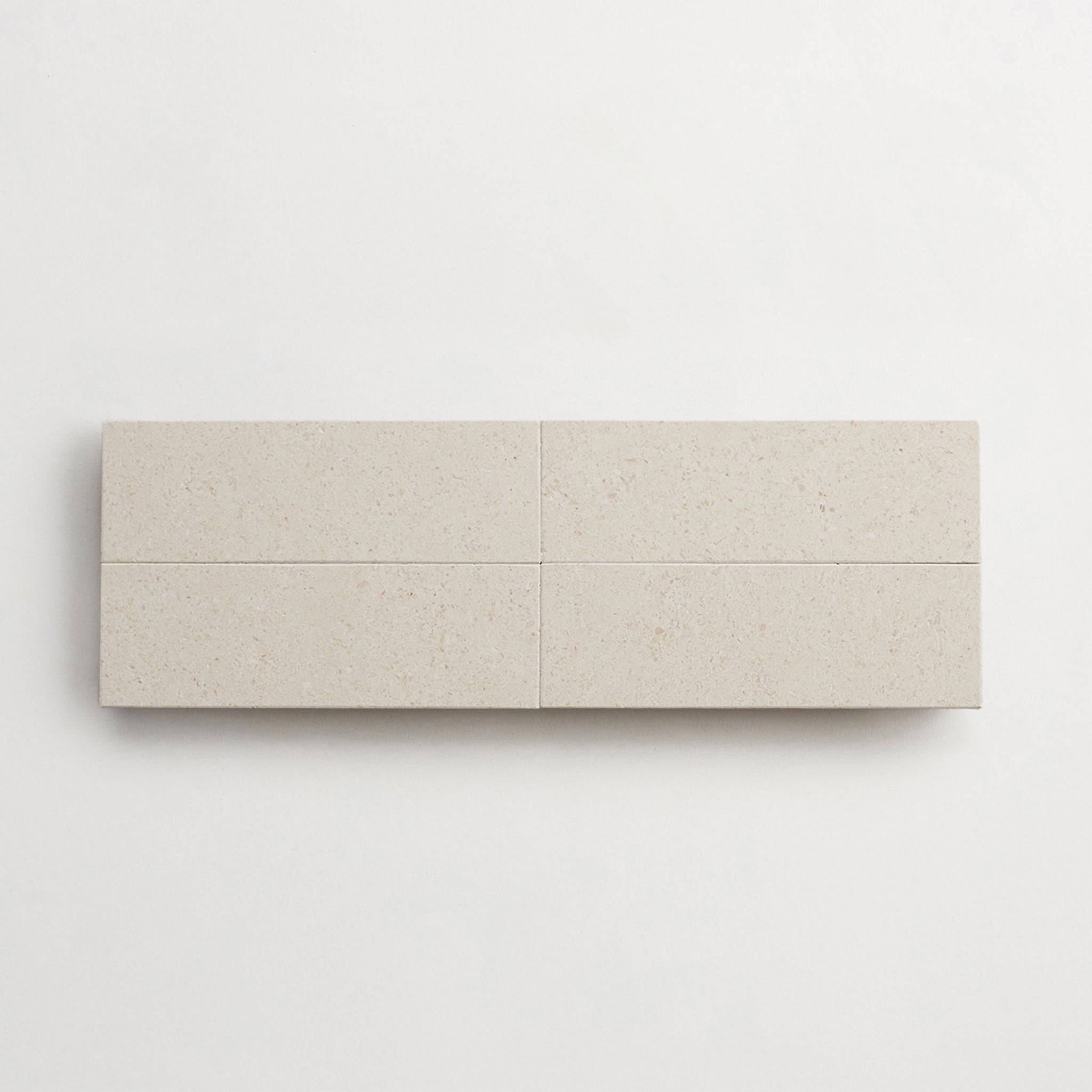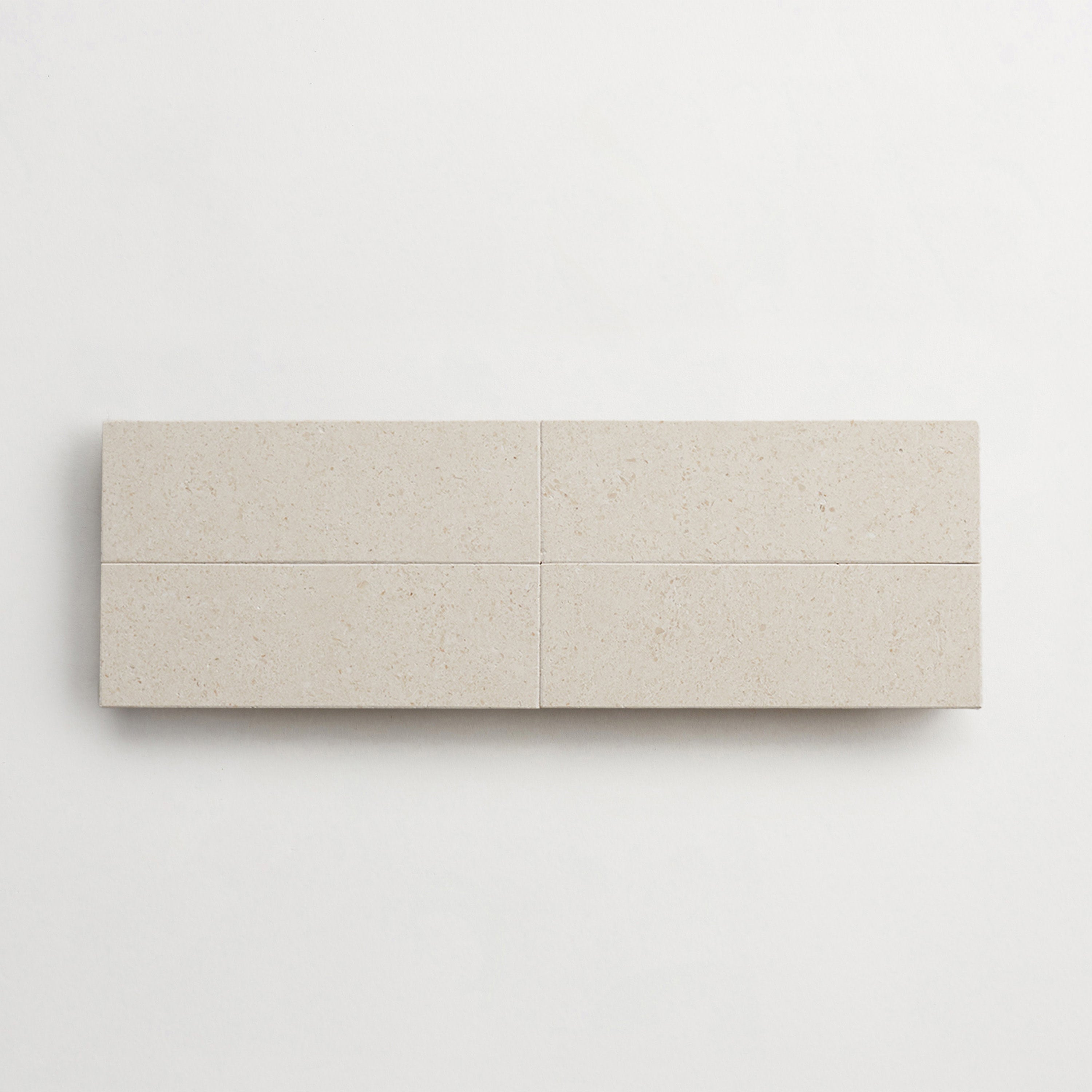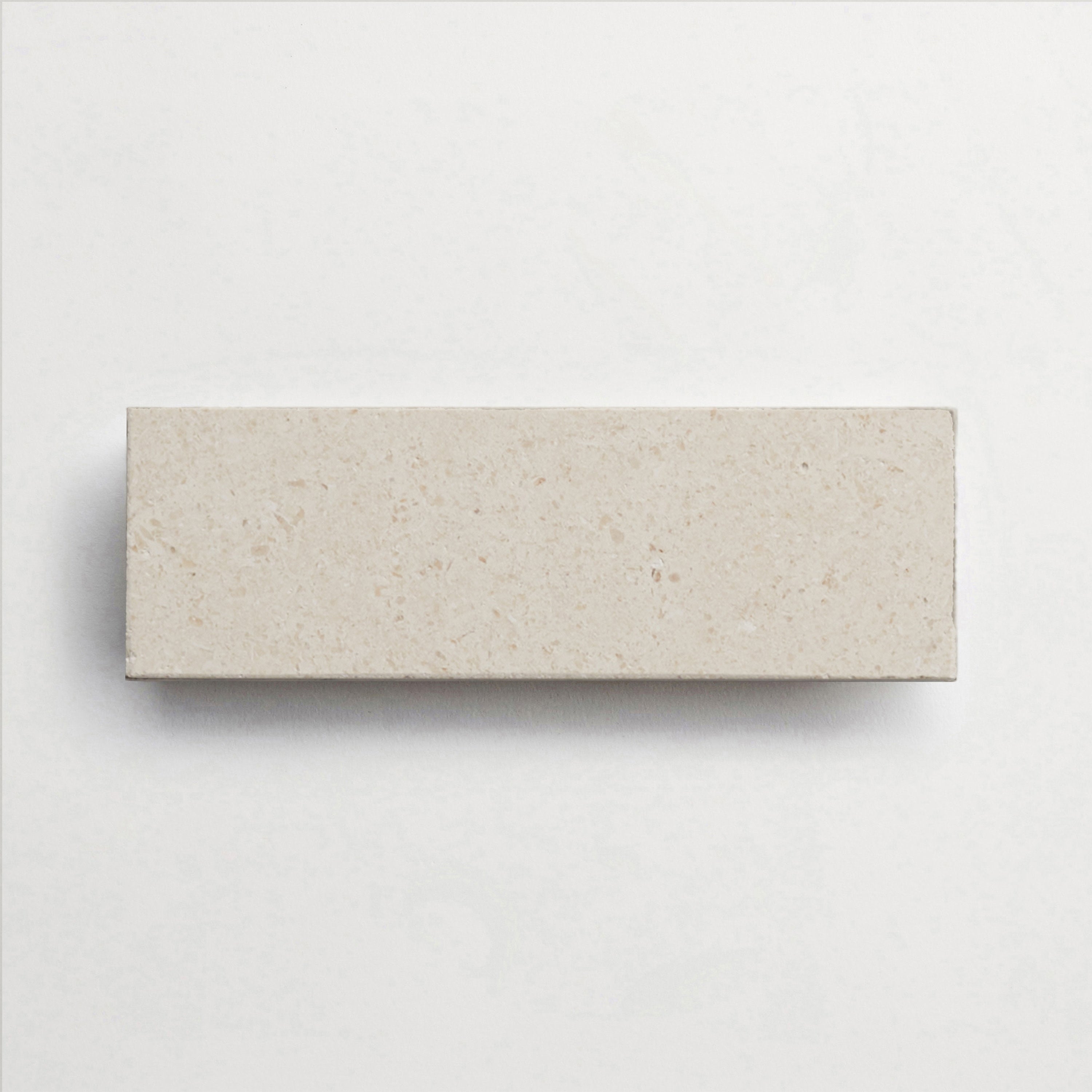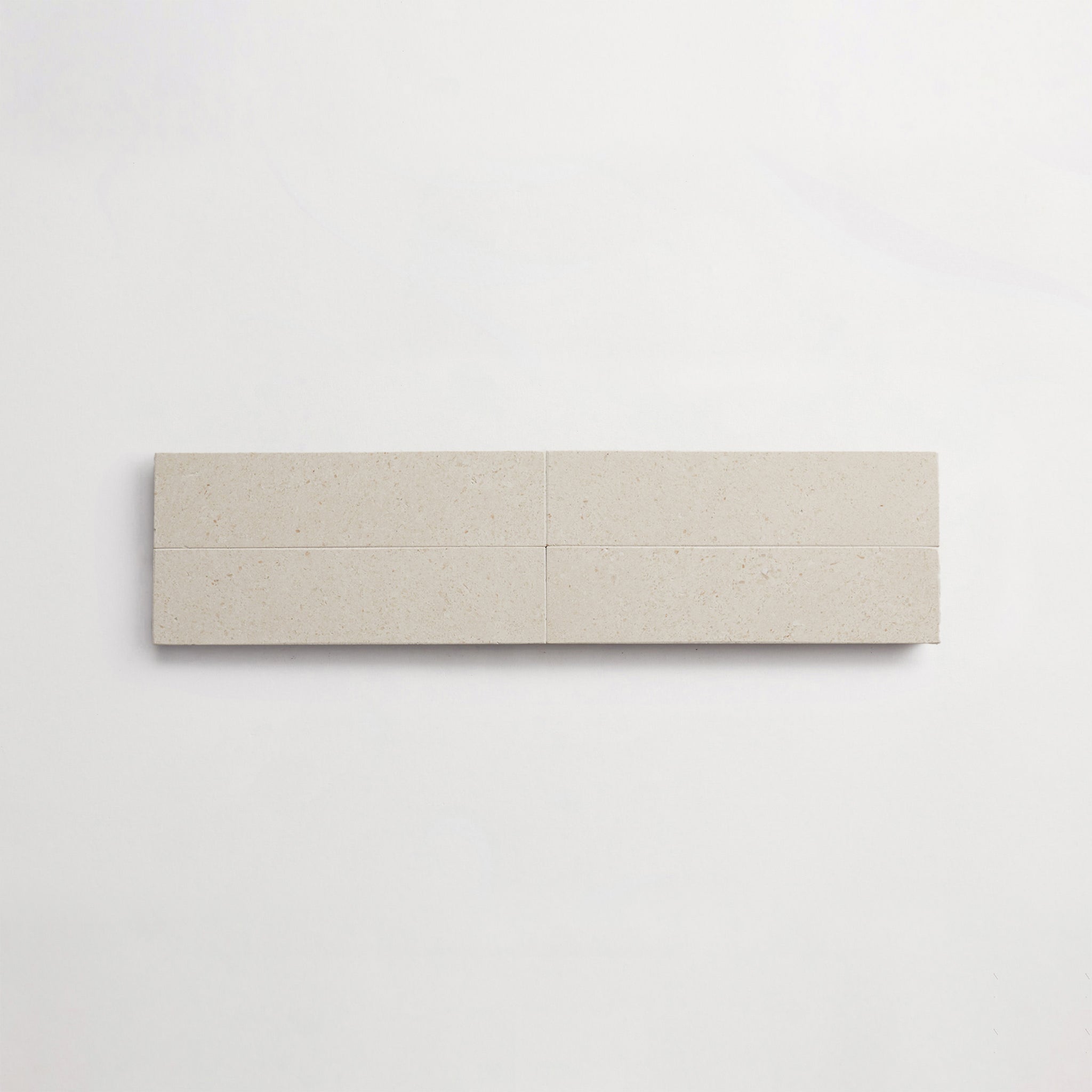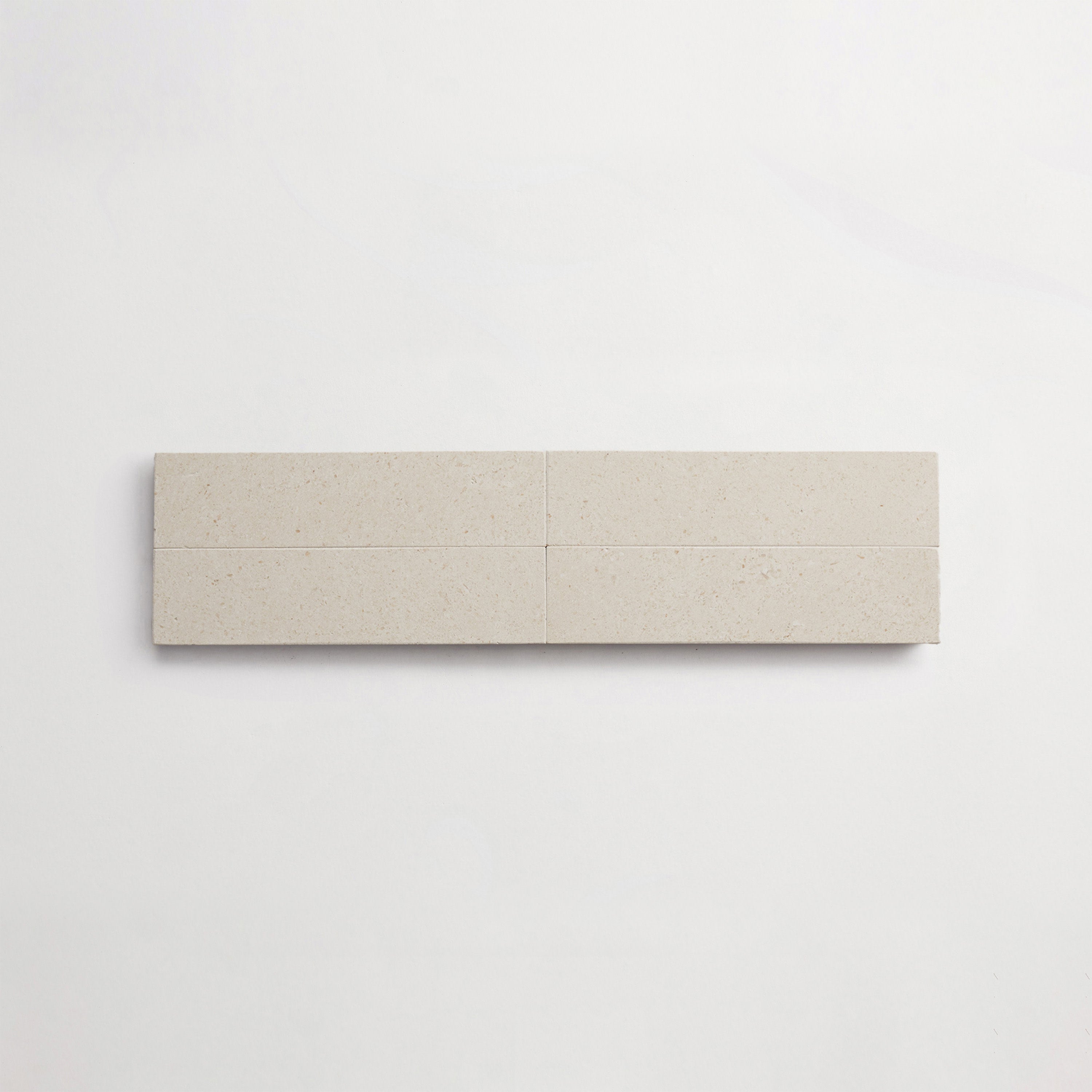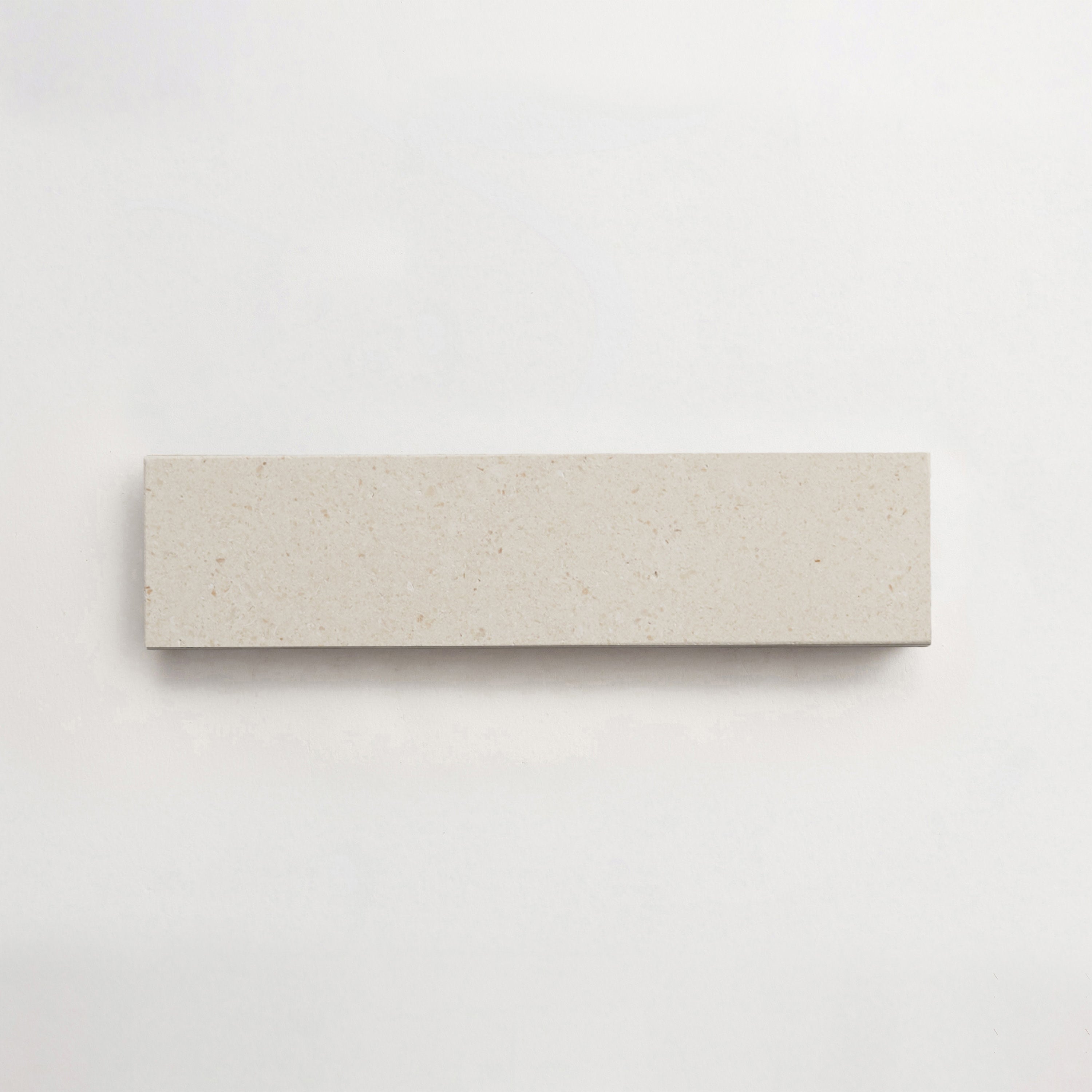your shopping cart is empty.

Lapidary, 2x6" Baguette, White Limestone, Honed
Is Limestone Strong? Exploring Its Outdoor Design Potential
Limestone has long been admired for its natural beauty and unique character. As a sedimentary rock formed predominantly from calcium carbonate, this stone offers an alluring blend of visual appeal and inherent strength, making it a popular choice in many building projects.
Historic landmarks like the Empire State Building to the Great Sphinx are living proof of limestone’s durability and timeless elegance. In this article, we take a closer look at the question “how strong is limestone?” and delve into the stone’s properties, use, and maintenance, especially in outdoor spaces.
Is Limestone Strong Enough for Outdoor Use?
When evaluating natural stone for outdoor applications, one of the first questions that comes up is this: Is limestone strong enough to meet the rigors of outdoor use? As a type of sedimentary rock, limestone owes its strength and durability to its unique combination of calcium carbonate and other minerals.
While limestone may not boast the compact strength of, say, igneous rock, it provides exceptional durability when properly maintained. Many projects benefit from its distinct ability to absorb and gradually release water. Although this may seem like a limitation under harsh weather conditions, it’s an asset for designers who appreciate the natural patina limestone develops over time.
That said, limestone is porous in nature. This means it needs regular sealing to protect it from water exposure, stains, and the like. With consistent cleaning and maintenance, limestone stands the test of time, making it a popular choice for outdoor settings.
How Strong Is Limestone Compared to Other Types of Natural Stone?
Comparing limestone to other types of natural stone reveals much about its composition, strength, and versatility. For instance, granite — an igneous rock — often has a higher compressive strength and is more resistant to scratches and abrasions. However, limestone offers a gentler aesthetic that many designers prefer for its subtle color variations and unique texture.
Sandstone, another natural stone derived from sedimentary processes, shares some similarities with limestone in both formation and composition, but limestone distinguishes itself through its mineral composition and overall visual impact. Meanwhile, dolomite tends to be harder and less reactice to acid than limestone.
While limestone might not boast the same level of hardness as granite or certain varieties of dolomite, limestone’s enduring appeal lies in its natural beauty and capacity to fit beautifully into different design contexts. Its natural color palette, ranging from soft beiges to muted greys, can be enhanced with proper maintenance practices that mitigate the effects of strong acids, water exposure, and freeze-thaw cycles.

Limestone exterior of Biltmore Estate in Asheville, North Carolina. Photo courtesy of Stephanie Klepacki.
Using Limestone in Outdoor Spaces
Limestone’s suitability for outdoor use extends into a diverse range of applications. It ages gracefully while maintaining structural integrity, making it a favored material for designers who want to blend natural beauty with robust construction.
Patios and Courtyards
Imagine a sun-dappled courtyard where the warm glow of natural stone connects a home’s interior with the lush outdoors. Limestone pavers and flooring lend a sense of continuity and organic warmth to patios and courtyards alike.
Homeowners and design professionals often choose limestone for its unique texture and coloring, which add timeless charm to any outdoor living space. The natural stone’s inherent durability, combined with proper maintenance techniques, makes it an ideal choice not only for everyday use but also for high-traffic areas that demand both beauty and resilience.
Designers can explore a range of layout options with limestone, from traditional patterns to modern, asymmetrical designs, ensuring that every outdoor space benefits from the stone’s natural appeal and structural integrity.
Outdoor Steps and Pathways
Outdoor steps and pathways serve as both functional and aesthetic features in hardscape design. Limestone’s smooth finish and natural variations in color add a sense of timeless beauty that can elevate even the simplest design. When used for stair cases, limestone stands up to the regular cleaning required for areas exposed to spills and harsh weather conditions.
Whether you’re gathering stone steps ideas, exploring outdoor stair tile materials, or planning a one-of-a-kind pathway, the versatility of limestone ensures that each project not only meets structural requirements but also brings an elevated sense of design.
Outdoor Kitchens
Limestone has increasingly become a popular choice for outdoor kitchens, combining functionality with a refined aesthetic. The natural beauty of limestone, with its delicate hues and unique texture, complements state-of-the-art appliances and contemporary design elements in outdoor kitchen spaces. It also has heat-resistant properties and remains beautiful through regular cleaning and maintenance.
If you’re designing a natural stone outdoor kitchen, integrating limestone rock into the kitchen will boost the space’s visual appeal, strength, and structural integrity. With careful planning and execution, you’ll likely find that a limestone-based outdoor kitchen becomes the centerpiece of the home’s exterior.

Natural limestone. Photo courtesy of Maxim Simonov.

The Great Pyramids of Egypt, made of limestone. Photo courtesy of Berat Bozkurt.
Maintaining Limestone in Outdoor Settings
While limestone’s exceptional durability can make it the ideal choice for various applications, maintaining its appearance and performance over the years requires attention to a few important details.
When and How to Seal Limestone
Limestone, being a porous natural stone, benefits significantly from regular sealing. Proper sealing not only enhances the stone’s rich, natural beauty but also provides a protective barrier against water, strong acids, and other contaminants that might otherwise degrade its surface over time.
A high-quality sealant can help prolong limestone’s durability by reducing its absorption of water and other elements, particularly in areas where spills or rainfall are common. Where harsh weather conditions will be a constant challenge, sealing limestone at appropriate intervals is especially crucial. Consider professional recommendations for the frequency of sealing to ensure the stone maintains its visual appeal and functional integrity.
Cleaning Limestone and Protecting it from Stains
Regular cleaning is key to preserving limestone’s natural beauty. Despite its robust properties, this natural stone can suffer from stains if not properly cared for, especially when exposed to spills, water, and organic matter common in outdoor environments.
Be sure homeowners know to clean limestone using gentle detergents and nonabrasive tools that will not scratch or damage the surface. For best results, they should consider using products that are specifically designed for natural stone and avoid harsh chemicals that may cause irreversible damage.
What to Know About Freeze-Thaw Cycles
One environmental challenge that limestone must overcome, especially in outdoor applications, is the freeze-thaw cycle. As water seeps into the porous matrix of limestone and later freezes, the expansion of ice can cause cracks or surface deterioration over time. This is particularly common in climates that experience frequent temperature fluctuations.
Understanding the impact of freeze-thaw cycles is a critical part of ensuring that limestone retains its strength and durability outdoors. By selecting the proper type of limestone and applying effective sealing methods, designers can mitigate the risks associated with freeze-thaw cycles. In addition, regular inspections and maintenance can identify early signs of damage, enabling prompt repairs that help preserve the stone.
The Importance of Professional Installation
While limestone offers a unique combination of natural beauty and durability, achieving exceptional results often starts with proper installation. Expert installation helps maximize limestone’s physical properties and ensures that each slab, paver, or step is placed with optimal structural integrity. Professional installers understand the nuances of different types of limestone and can recommend the best techniques for ensuring proper alignment, spacing, and support.
Investing in professional installation not only enhances the aesthetic and functional properties of limestone applications but also provides peace of mind for architects, designers, and homeowners alike. Ensuring that limestone is installed correctly from the start lays the foundation (literally, even) for years of enjoyment and durability.
As you embark on your next building project or landscape design, consider the many applications of limestone — from limestone flooring that enhances the visual appeal of any area to walls that evoke a sense of enduring natural beauty. With proper sealing, careful cleaning, and professional installation, limestone can stand the test of time, ensuring that it remains an ideal choice today and for generations to come.
-
White Limestone
-
lapidary
:
-
Righe
-
4
" x
-
16
" x
-
⅝
"
-
sqft
/
$
-
White Limestone
-
lapidary
:
-
Savoy
-
4
" x
-
4
" x
-
⅛
"
-
sqft
/
$
-
White Limestone
-
lapidary
:
-
Torrone I
-
8
" x
-
8
" x
-
⅞
"
-
sqft
/
$



